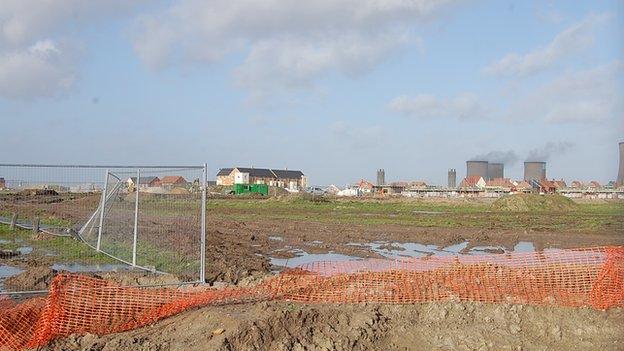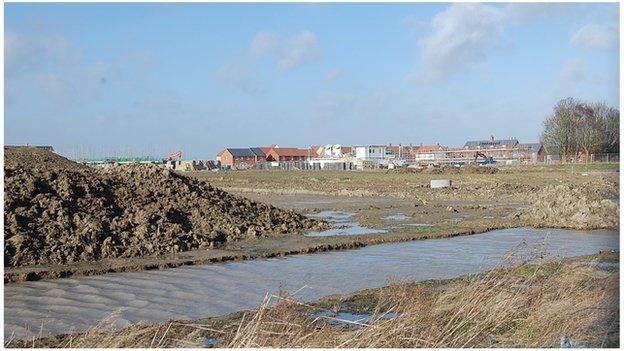Didcot dig: Road near Bronze Age monument site approved
- Published

About 3,300 homes, schools and shops are being constructed on the 180-hectare site
A new road which campaigners tried to have rerouted to save the site of a Bronze Age burial monument has won planning permission.
A dig ahead of work starting on the Great Western Park estate in Didcot, Oxfordshire, discovered humans had lived on the site for 9,000 years.
The Eastern link road, approved by South Oxfordshire District Council, will cut across the pond barrow site.
Builder Taylor Wimpey said archaeology had already been cleared from the area.
Archaeologists spent three years excavating it and found thousands of items and remains, indicating the site had been continuously lived on since the end of the last ice age.
History trail
Among them was a rare Neolithic bowl from about 3,600 BC, 60 Iron Age roundhouses, 50 burials and a Roman farmstead.
Campaigner Karen Waggott said it was "very disappointing" permission had been given for the road to go through the burial site.
She added: "Just a few weeks after saying they support the history trail, developers are building over historic sites.
"They could submit a new application that avoids the pond barrow, but this seems highly unlikely now."
She said the campaigners would be asking for any applications for homes which would border the new road would incorporate a semi-circle of green space, showing the size and shape of what remained of the barrow's location.
District councillor Denise MacDonald said she was also disappointed Taylor Wimpey would not submit a "more sympathetic" plan.
She said: "It may not seem significant to them but to people who come from, and live in Didcot - a town that is seen as new to most - it is important to recognise that we have a great history as well."
There are about 100 Bronze Age pond barrows identified in the UK.
The Didcot one was a stone-lined 12m wide circular depression - which the archaeologists believe was used for "exposure burials".
Taylor Wimpey said "comprehensive archaeological works" identified the significance of the pond barrow "which as a consequence of investigation was removed from this location".
"The artefacts and records from the site are now being analysed.
"When this process is completed a synopsis of the results will be displayed on an information board located at the eastern side of Boundary Park at GWP, which will form part of a history trail for the benefit of the whole community."
- Published23 January 2014

- Published20 April 2013

- Published14 February 2013

- Published10 March 2011